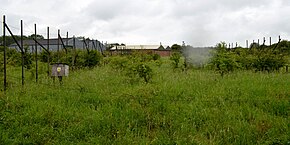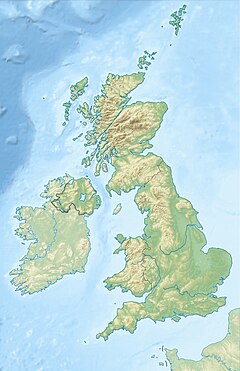| This article needs additional citations for verification. Please help improve this article by adding citations to reliable sources. Unsourced material may be challenged and removed. Find sources: "Interplanetary Scintillation Array" – news · newspapers · books · scholar · JSTOR (July 2017) (Learn how and when to remove this message) |
 | |
| Part of | Mullard Radio Astronomy Observatory |
|---|---|
| Location(s) | Cambridge, Cambridgeshire, East of England, England |
| Coordinates | 52°09′47″N 0°02′04″E / 52.16315°N 0.034354°E / 52.16315; 0.034354 |
| Organization | Mullard Radio Astronomy Observatory |
| Telescope style | radio telescope |
 | |
| | |
| [edit on Wikidata] | |

The Interplanetary Scintillation Array (also known as the IPS Array or Pulsar Array) is a radio telescope that was built in 1967 at the Mullard Radio Astronomy Observatory, in Cambridge, United Kingdom, and was operated by the Cavendish Astrophysics Group. The instrument originally covered 4 acres (16,000 m). It was enlarged to 9 acres in 1978, and was refurbished in 1989.
The array operates at a radio frequency of 81.5 MHz (3.7 m wavelength), and is made up of 4,096 dipole antennas in a phased array. Using 14 beams, it can map the northern sky in one day. The observatory's staff use sheep to keep grass away from the antennas because a lawn mower cannot fit in the spaces.
Antony Hewish designed the IPS Array to measure the high-frequency fluctuations of radio sources, originally for monitoring interplanetary scintillation. Hewish received a Nobel prize after the high time-resolution of the array allowed the detection of pulsars by Jocelyn Bell in 1967.
The IPS Array has more recently been used to track and help forecast interplanetary weather, and specifically to monitor the solar wind. It is now essentially retired, and has lost a significant fraction of its area.
References
- "The First Pulsar". Astrobites. 15 September 2017.
This article about a specific observatory, telescope or astronomical instrument is a stub. You can help Misplaced Pages by expanding it. |